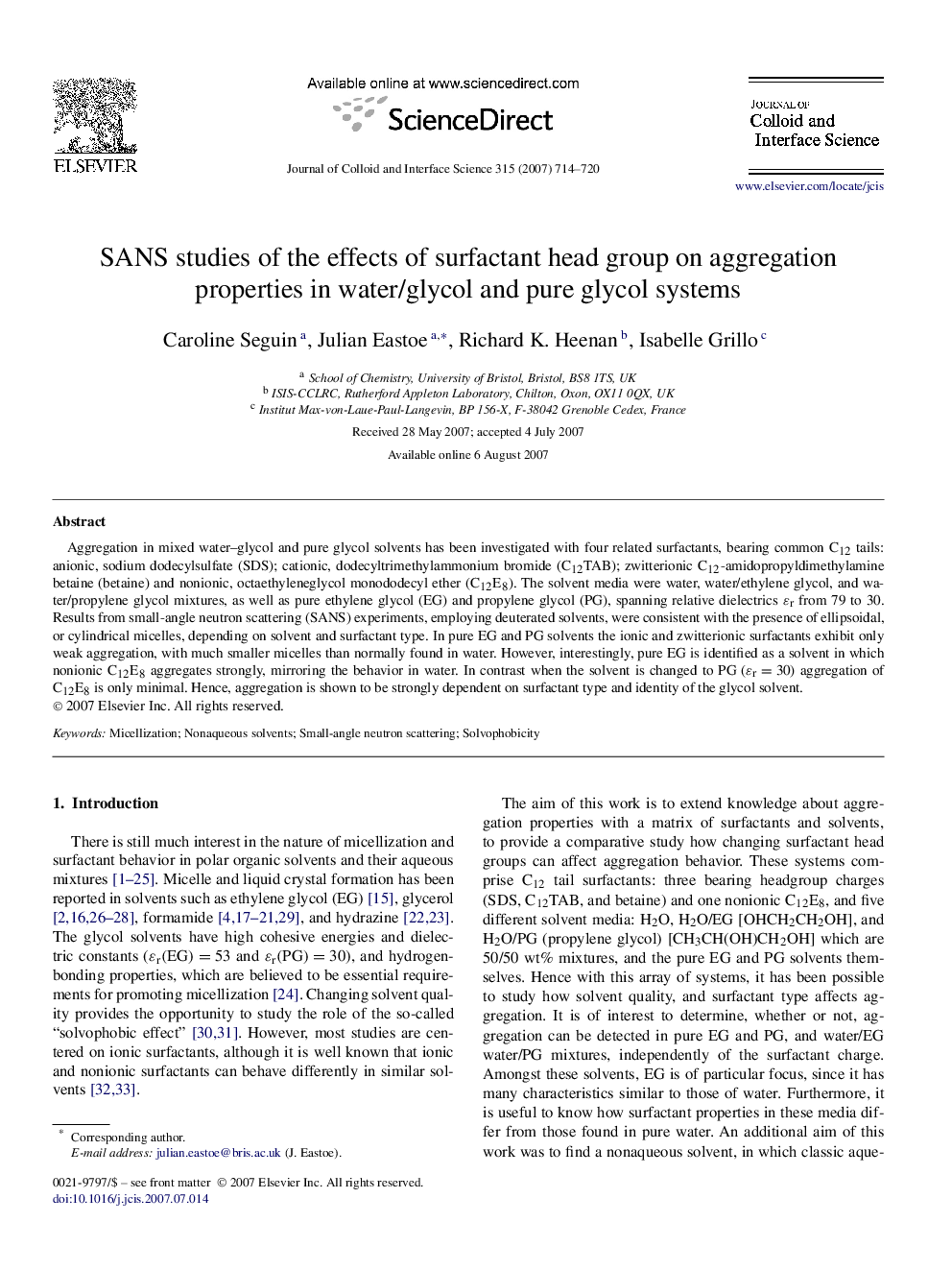| Article ID | Journal | Published Year | Pages | File Type |
|---|---|---|---|---|
| 612186 | Journal of Colloid and Interface Science | 2007 | 7 Pages |
Aggregation in mixed water–glycol and pure glycol solvents has been investigated with four related surfactants, bearing common C12 tails: anionic, sodium dodecylsulfate (SDS); cationic, dodecyltrimethylammonium bromide (C12TAB); zwitterionic C12-amidopropyldimethylamine betaine (betaine) and nonionic, octaethyleneglycol monododecyl ether (C12E8). The solvent media were water, water/ethylene glycol, and water/propylene glycol mixtures, as well as pure ethylene glycol (EG) and propylene glycol (PG), spanning relative dielectrics εrεr from 79 to 30. Results from small-angle neutron scattering (SANS) experiments, employing deuterated solvents, were consistent with the presence of ellipsoidal, or cylindrical micelles, depending on solvent and surfactant type. In pure EG and PG solvents the ionic and zwitterionic surfactants exhibit only weak aggregation, with much smaller micelles than normally found in water. However, interestingly, pure EG is identified as a solvent in which nonionic C12E8 aggregates strongly, mirroring the behavior in water. In contrast when the solvent is changed to PG (εr=30εr=30) aggregation of C12E8 is only minimal. Hence, aggregation is shown to be strongly dependent on surfactant type and identity of the glycol solvent.
Graphical abstractSANS curves for 10 wt% surfactant solutions of SDS, C12TAB, betaine, and C12E8 in deuterated ethylene glycol.Figure optionsDownload full-size imageDownload as PowerPoint slide
